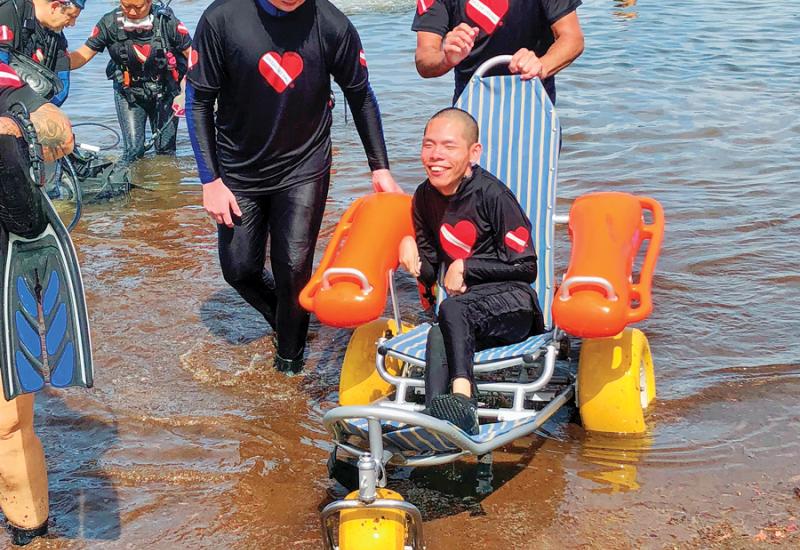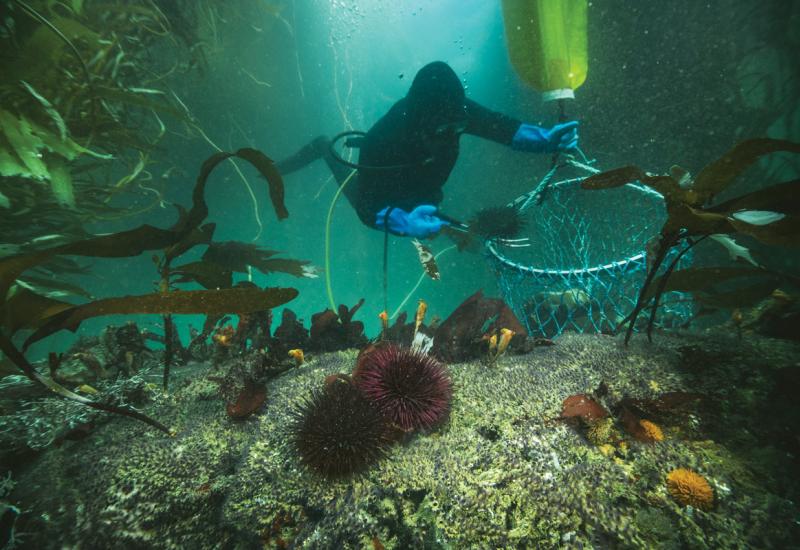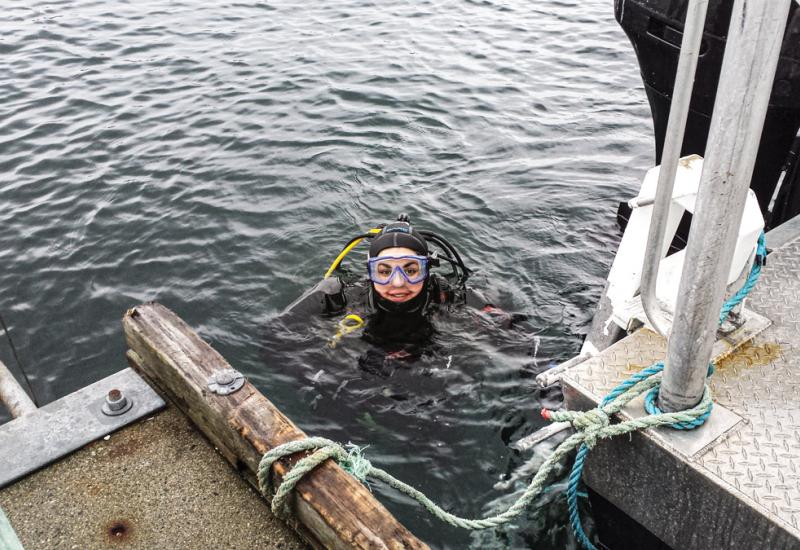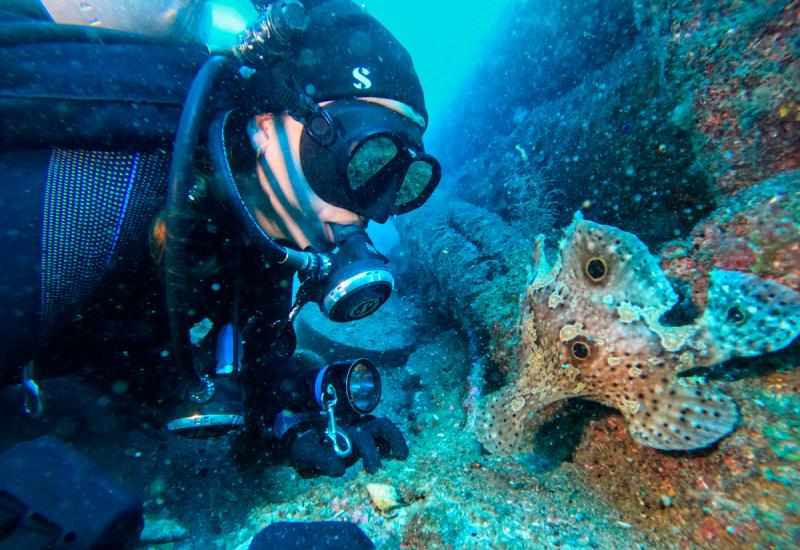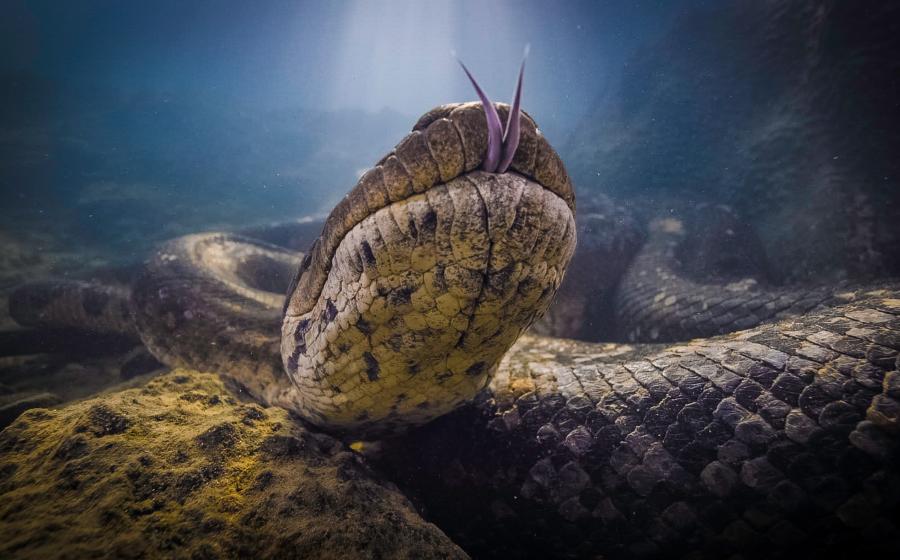What It's Like To Be a Golf Ball Diver
 |
| The morning commute to Big Mama's house. |
Driving his golf cart around the Dallas Athletic Club's Gold Course, Brett Parker looks like the proverbial fish on a bicycle. Though the temperature is soaring into the high 80s on this muggy June day, the 42-year-old transplanted Zimbabwean is covered head-to-toe in a black 3mm wetsuit, hood and booties. In the back of the cart, where one normally stashes golf clubs, he's toting three scuba tanks, each of which looks a bit worse for the wear. And on the seat next to him sit a number of yellow mesh dive bags, to which he's attached the sawed-off tops of plastic bait buckets. Though he's a slender athletic-looking man when in street clothes, he now looks like the Creature from the Black Lagoon--except, of course, that he's steering a golf cart.
If he cuts a rather comical figure, however, no one seems to notice. Parker, who's worked this course for 13 years, is well-known. As he drives around, golfers joke with him. "I think we're keeping you in business," says one frustrated duffer in a foursome. A course employee asks: "Seen any snakes lately?" Parker just nods. It's not a matter of whether he's seen them; it's only a question of how many and how big.
At the second hole--a 178-yard, par-3 dominated by a large, tadpole-shaped pond with a fountain bursting from the middle--he stops and gets out. Lurking somewhere beneath the dark green water, maybe in the southeast corner by the lily pads and the hanging willow branches, is Big Mama, a five-foot-long cottonmouth water moccasin. The venomous monster of a snake is something of a course legend--and Parker is quick to give her due respect.
Donning his mask, Parker hikes up a 25-pound weight belt, then slips into a tank. He pulls on a pair of work gloves, grabs a pair of mesh bags, and slowly lowers himself into the pond, scanning the entire surface as he does.
"When I dive in Texas, I check for snakes when I get in," he says. "I want to make sure there are no newcomers." Popping a regulator into his mouth, he sinks below the surface and disappears from view. The only proof of his existence are the bubbles that trail him around the pond.
Below the surface, however, the pace is not so serene. Parker drops straight to the bottom on hands and knees, crawling through several feet of silt, branches and leaves, raking the mud with his hands as he goes. He works furiously, picking up one to five golf balls at a time and placing them into his mesh bag, counting as he goes.
When he emerges, after about an hour, he's filled two bags with 1,400 dirty, smelly balls. Each bag weighs 70 pounds each. He'll earn more than $100 for this one hour's work and, in the course of a year, he'll make about $2,500 on this one pond alone.
Nice Work If You Can Get It
 |
| Brett Parker holds private contracts with 20 golf courses. |
Parker is a professional golf ball diver, so every slice, shank and wormburner on the second hole means money in his pocket. He's been in the business for 14 years, and has dived 2,500 golf courses in 33 states. And he's not alone. Golfers' misery has become a big, big business. According to Scott Smith, a senior editor at Golf Digest, about one billion new golf balls are produced each year. Of those, about 100 million eventually get scooped by guys like Parker and re-sold. Over the past couple of decades, golf ball retrieval and recycling has become a multimillion-dollar industry, in which hardworking divers can earn between $50,000 and $100,000 annually, depending on the economy and a diver's stomach for harsh conditions.
Still, the wealth does not come cheaply. Golf ball divers face plenty of dangers, from pesticides and fertilizers to gators and snakes. But the biggest threat--one that affects their profits--comes from poachers who frequently sneak onto courses and attempt to steal the "white gold." That's why Parker regards Big Mama with the warmth one might reserve for a beloved childhood nanny. "She's been here as long as I have," he says. "She's my watchdog for the guys at night. I don't wish evil on people, but if they're going to steal my balls, I wish they'd get bitten."
In the "legit" business, a golf ball retrieval company or an individual diver signs an exclusive contract with a course to gather balls from its ponds. In return, the retrieval company pays the golf course a per-ball fee (usually eight to 10 cents a ball) or gives them a percentage of the balls to use on the driving range or sell in the pro shop. The retrieval companies then sell the remaining balls to national chain stores or overseas vendors or hawk them on the internet, where golf ball deals abound. Titleist Pro V1s, considered the Cadillac of golf balls, sell for about $50 a dozen new. Recycled, they're about one-half to one-third the price.
Parker is typical of successful golf ball divers. He has private contracts with 20 golf courses, including the Dallas Athletic Club, to do their retrieval and recycling, and dives at a number of other courses for another recycling company in Houston. He nets eight to nine cents for every ball he retrieves. On an average workday, he dives from 7 a.m. to noon and collects 3,000 balls.
The pros call poachers by a variety of names, "Nighthawks," "Captain Midnights" and "Nighthunters," and they are universally reviled. "Most of them are criminals and thieves," says Tampa diver Mike Gerstner, who owns Golfballdepo.com. But Nighthawks understand at least one of the fundamentals of the business. If they bypass the fees paid to the course, then every ball retrieved is pure profit (not to mention tax-free). And because poachers are as common on golf courses as temper tantrums, the golf ball retrieval industry has become fraught with competition and secrecy. No one wants anyone else to know just how many balls a certain golf course will yield. Even Parker, as he makes the rounds of the Dallas Athletic Club, deliberately tells golfers who ask that he's toting 2,000 balls in his golf cart; in truth, he's got about 3,000. But at least he's willing to talk to a reporter. One golf ball company president, when asked to be interviewed for this story, flatly refused. "It's bad for business," he said. "Everyone thinks they can get into it."
A Special Breed of Cat
 |
| On an average workday, Brett Parker collects 3000 golf balls. |
Alas, everyone cannot get into it. Veteran golf ball divers like to tell the tale of the sport diver who, accustomed to the clear, warm waters of the Caribbean or Great Barrier Reef, thinks he can rake it in as a golf ball diver. "Most people say, 'I've been here and I've dived there' and I say, 'Those are real pretty places,'" says Paul Lovelace, a diver and owner of Golf Ball Paul's in Kansas City, Kan. "They last 15 minutes."
"It takes a special breed of cat to do this kind of work," says Fred Willis, owner of Golf Plus, a golf ball recycler, in Dallas. A special cat, indeed. The water is so filled with muck and chemicals (fertilizer and pesticide run-off) that divers must have regular tetanus shots, and all are quick to hop in the shower after they've finished working. And except in Arizona and Palm Beach, where the plastic-lined, man-made water hazards are considered the cushiest in the business, most golf ball diving is in zero-visibility blackwater. "You can put your fingers on your mask and not see your fingers," says Norm Spahn. And if you can't see your fingers, you certainly can't see your pressure gauge, not to mention the snapping turtles and snakes and gators lying on the bottom of the pond.
Spahn should know. He's suffered three venomous water moccasin bites, and now carries a snakebite kit with him, as does Parker, who's also been bitten three times. If Spahn needs any more reminders of the inherent dangers, he can glance at his left arm, which still bears the scars of an alligator bite he suffered four years ago at the Sawgrass Country Club. So much for the myth that alligators don't attack under water. "Think about it," says Spahn. "They eat fish."
Of course, on any given day, a golf ball diver is likely to encounter an equally dangerous threat, which is why Parker wears heavy work gloves. Many ponds are littered with broken bottles, which can cut a diver's hands to shreds and leave him out of work for months. And if it's not broken bottles, it's other man-made pollution.
In 1993, Parker nearly drowned when he became ensnared in a "cobweb of lures and fishing lines" that was attached to a submerged tree. Now, he always carries a hunting knife, which is securely attached to his left calf. Norm Spahn almost met the same fate while diving in Texas a few years back. He had just run out of air in his tank when he became entangled in a roll of barbed wire. Trying not to panic, he held his breath as he carefully worked himself out. "You have to be a very self-sufficient diver to do this," says Spahn. "Even if you had a friend, they couldn't see you."
Still, close calls are preferable to the fate that other divers have suffered. On June 11, 2001, Emmett Clive Willis III, a diver who'd been certified for only three months, died while retrieving balls from the pond at the 15th hole of the Westport Country Club in Hickory, N.C. He was 51 years old. On Dec. 31, just six months later, 21-year-old Mark Feher, an experienced diver, perished while retrieving balls from the Links of Boynton Beach, in Florida. In both cases, the cause of death was drowning.
Golf ball divers treat death with the sort of casual interest that rock climbers do. Everyone knows of someone, or has heard of someone, who has died. If you really want to get a diver's blood boiling, death will not do it. Nighthawks, however, will.
"You have no idea how much damage they do to me," says Parker.
"I figured out one time that they were costing me $30,000 a year," says Spahn.
"A bunch of thieving bastards," says Gerstner.
Crime and Punishment
 |
| The top of a bait bucket forms a one-way valve for Parker's collection bag. |
The ill will is not misplaced. Sure, there are the retirees who walk the golf course at night, skimming balls as they go (a retiree in Atlanta once tried to sell Spahn 42,000 balls), but it's guys like "Mark" and "Matt," two former poachers who agreed to speak for this article on condition of anonymity, who inspire the greatest venom.
Mark, 27, and Matt, 31, poachers who worked in the Southwest before recently going legit, aren't the kind of boys you'd bring home to Mom. Mark's on parole for assault; Matt for safecracking, a crime for which he spent six years in prison. Still, they showed a kind of work ethic that would make a mother proud. Seven nights a week, they'd meet three or four other guys at dusk and sneak onto a course. "Once the sun went down, all the balls belonged to us," says Mark.
Working as late as dawn, they'd get 5,000 to 6,000 balls a night, sometimes working the same golf course as often as once a week. When they first started, they'd get paid 20 to 25 cents a ball. Selling the balls was no problem; Matt had four uncles in the business.
Unlike many poachers, they knew how to dive. But many of their colleagues still favored wading the edges, where most of the balls land. Matt, for example, once came upon two of the guys in his crew ("both really big") "beating the shit out of each other" over who got to work the edge. On another occasion, he found his crew beating the living daylights out of another poaching crew, rivals who'd beaten them to a pond. "But I broke it up," says Matt, " 'cause the other guys were my cousins."
Golf course security is often lax. One night, the guys were working a course, says Matt, "and the security guy is sitting there smoking a joint, talking to us." When the poachers were finished, they offered the guy $20 to give them a ride back to their truck. During the ride, the security officer mentioned that he worked every Tuesday and Thursday. "So we'd only hit that course on Tuesdays and Thursdays," says Matt, "and pay him $40 for a ride each way."
It's not always so easy. They've been chased by the cops. They've been shot at. They've received tickets for trespassing. But, says Mark, "they pretty much give you a slap on the wrist for it." When Mark received his $350 ticket for trespassing, for example, he just threw it in the trash. Why? He'd never shown the cop his driver's license. "I always left my money and wallet at home--in case I had to run."
When poachers do get arrested in the U.S., it's usually for trespassing and not grand theft. Not so in Great Britain, where the arrest of John Collinson, 36, a veteran poacher from Chorley, Lancashire, spurred a media frenzy.
After emerging from a hole at Whetstone Golf Course in Leicester in August 2001 with 1,158 "lakeballs," as the Brits call them, Collinson was arrested for theft and sentenced to six months in jail. He then became a cause célèbre, the subject of every daytime TV show, as Brits protested the severe punishment for what seemed like a minor crime. His case even reached Prime Minister Tony Blair, who wrote a letter on Collinson's behalf to the local member of Parliament. Collinson was freed early, and the case is now in appeal. In the greatest of ironies, however, the arrest may have been the best business card he could have bought. Golf courses are now lining up to give him legit lakeball work.
It's not an unusual career path. "Everybody I know started out at night," says Mark. Still, when American poachers get arrested or harassed by golf course security, they don't present quite the jolly face that Collinson did. American poachers who've been arrested or harassed by security have returned to the scene of the crime and dumped chlorine on the greens, torched them or run motorcycles over them. Mark likes to tell the story of one poacher who, after being arrested for trespassing, returned to the course and cut the putting green in question. Then he rolled it up and threw it in the pond.
The Boom Goes Bust
 |
| Bringing home the bacon: Parker nets about nine cents for ever nugget of "white gold" he recovers. |
Even crime isn't what it used to be, though. For poachers and pros alike, business has been down, and the crazy amounts of money have dried up. Everybody has a theory. Too many people have gotten in the business and driven the prices down. The market's been flooded with new cheap balls. And then there's Parker's favorite: "Every guy who lost $2 or $3 million in the stock market is no longer taking Thursday afternoons off to play golf," he says.
There are other perks, though. In his 14 years of diving, Parker has found the golf balls of Nick Price, Mark Calcavecchia and Fred Couples. Norm Spahn has found a ball of the first President Bush. And Parker's put together a collection of about 400 antique golf balls, worth thousands of dollars, the oldest of which is an 1894 Gutta Percha, retrieved from a course in the Hamptons.
Not all of these things have fallen in by accident. Parker tells the tale of one golfer in Plano, Texas, who, in sheer frustration, dumped his entire golf bag into a river that ran through the course. It was only as he watched it sink to the bottom that the golfer realized that $1,500 and his Rolex were also in the bag. Parker was called in for retrieval. But, he says, "we never did find it."
Parker has found other, more unlikely things in the bottom of ponds. He's found two BMWs, two Cadillacs, and more guns than he can count. Once, in Florida, he found a dead woman in a car.
Mostly, though, he finds golf balls and golf clubs, tangible proof of the maddening nature of the game. He's found so many golf clubs that he's completed four sets of Pings, three of which he sent to his relatives in Africa and one that he sent to his brother in Florida. But he didn't bother keeping a set for himself. Even though Parker was once a nine-handicapper who regularly shot in the high 70s, a good set of clubs would probably just sit in his garage. "The last place I want to go on a weekend," says Parker, "is a golf course."
|| |---|
|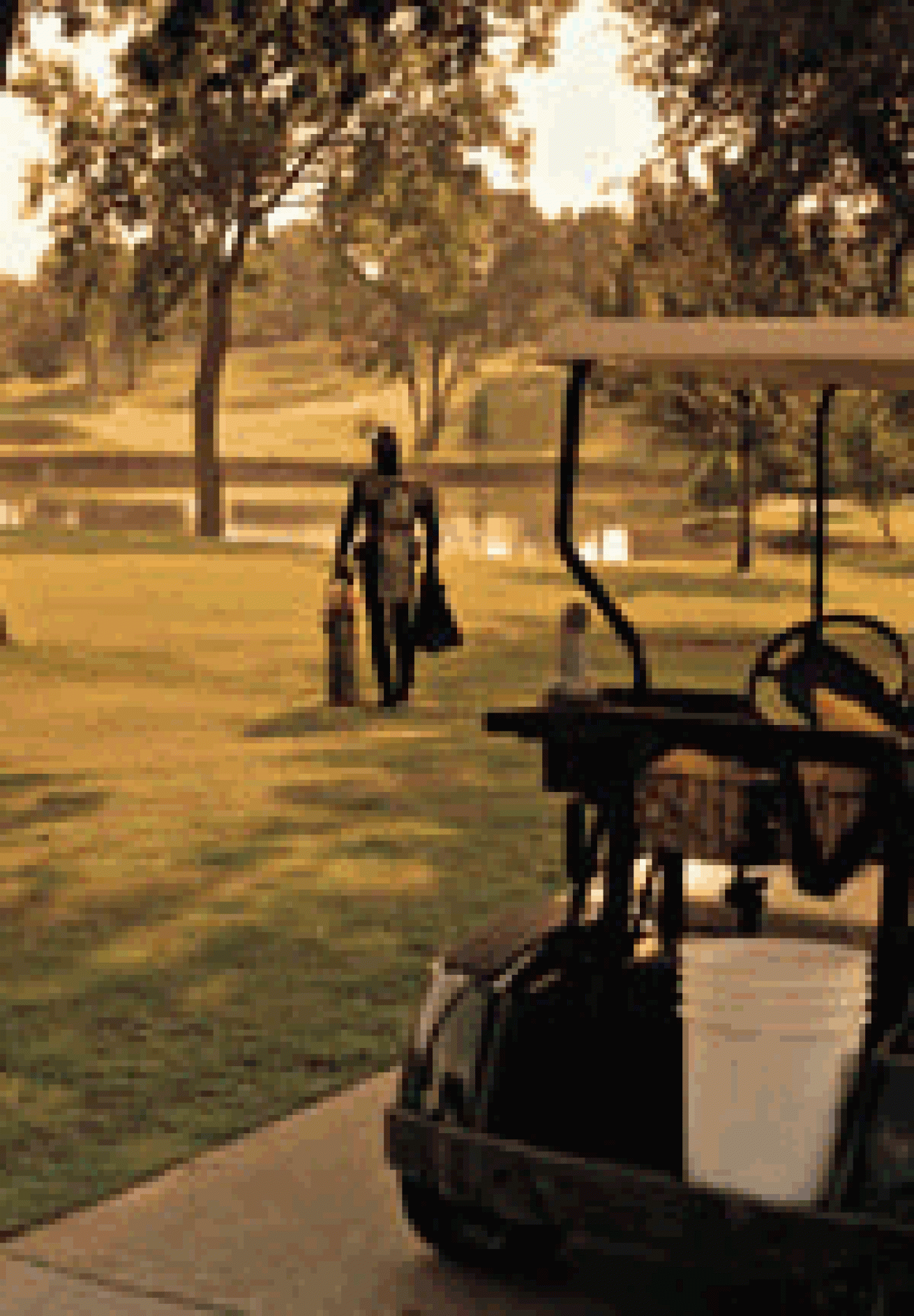
| |The morning commute to Big Mama's house.|
Driving his golf cart around the Dallas Athletic Club's Gold Course, Brett Parker looks like the proverbial fish on a bicycle. Though the temperature is soaring into the high 80s on this muggy June day, the 42-year-old transplanted Zimbabwean is covered head-to-toe in a black 3mm wetsuit, hood and booties. In the back of the cart, where one normally stashes golf clubs, he's toting three scuba tanks, each of which looks a bit worse for the wear. And on the seat next to him sit a number of yellow mesh dive bags, to which he's attached the sawed-off tops of plastic bait buckets. Though he's a slender athletic-looking man when in street clothes, he now looks like the Creature from the Black Lagoon--except, of course, that he's steering a golf cart.
If he cuts a rather comical figure, however, no one seems to notice. Parker, who's worked this course for 13 years, is well-known. As he drives around, golfers joke with him. "I think we're keeping you in business," says one frustrated duffer in a foursome. A course employee asks: "Seen any snakes lately?" Parker just nods. It's not a matter of whether he's seen them; it's only a question of how many and how big.
At the second hole--a 178-yard, par-3 dominated by a large, tadpole-shaped pond with a fountain bursting from the middle--he stops and gets out. Lurking somewhere beneath the dark green water, maybe in the southeast corner by the lily pads and the hanging willow branches, is Big Mama, a five-foot-long cottonmouth water moccasin. The venomous monster of a snake is something of a course legend--and Parker is quick to give her due respect.
Donning his mask, Parker hikes up a 25-pound weight belt, then slips into a tank. He pulls on a pair of work gloves, grabs a pair of mesh bags, and slowly lowers himself into the pond, scanning the entire surface as he does.
"When I dive in Texas, I check for snakes when I get in," he says. "I want to make sure there are no newcomers." Popping a regulator into his mouth, he sinks below the surface and disappears from view. The only proof of his existence are the bubbles that trail him around the pond.
Below the surface, however, the pace is not so serene. Parker drops straight to the bottom on hands and knees, crawling through several feet of silt, branches and leaves, raking the mud with his hands as he goes. He works furiously, picking up one to five golf balls at a time and placing them into his mesh bag, counting as he goes.
When he emerges, after about an hour, he's filled two bags with 1,400 dirty, smelly balls. Each bag weighs 70 pounds each. He'll earn more than $100 for this one hour's work and, in the course of a year, he'll make about $2,500 on this one pond alone.
Nice Work If You Can Get It
|| |---|
|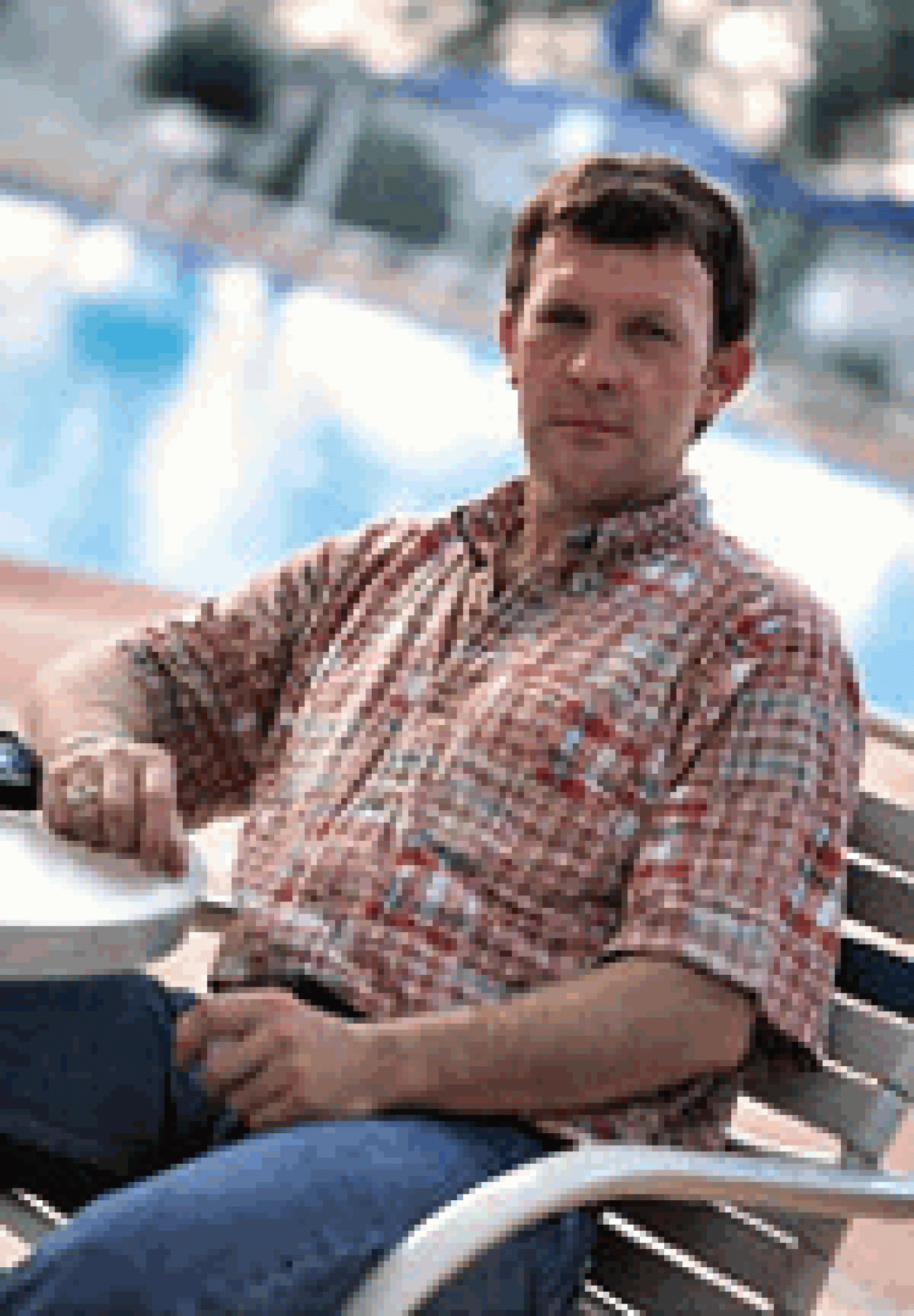
| |Brett Parker holds private contracts with 20 golf courses.|
Parker is a professional golf ball diver, so every slice, shank and wormburner on the second hole means money in his pocket. He's been in the business for 14 years, and has dived 2,500 golf courses in 33 states. And he's not alone. Golfers' misery has become a big, big business. According to Scott Smith, a senior editor at Golf Digest, about one billion new golf balls are produced each year. Of those, about 100 million eventually get scooped by guys like Parker and re-sold. Over the past couple of decades, golf ball retrieval and recycling has become a multimillion-dollar industry, in which hardworking divers can earn between $50,000 and $100,000 annually, depending on the economy and a diver's stomach for harsh conditions.
Still, the wealth does not come cheaply. Golf ball divers face plenty of dangers, from pesticides and fertilizers to gators and snakes. But the biggest threat--one that affects their profits--comes from poachers who frequently sneak onto courses and attempt to steal the "white gold." That's why Parker regards Big Mama with the warmth one might reserve for a beloved childhood nanny. "She's been here as long as I have," he says. "She's my watchdog for the guys at night. I don't wish evil on people, but if they're going to steal my balls, I wish they'd get bitten."
In the "legit" business, a golf ball retrieval company or an individual diver signs an exclusive contract with a course to gather balls from its ponds. In return, the retrieval company pays the golf course a per-ball fee (usually eight to 10 cents a ball) or gives them a percentage of the balls to use on the driving range or sell in the pro shop. The retrieval companies then sell the remaining balls to national chain stores or overseas vendors or hawk them on the internet, where golf ball deals abound. Titleist Pro V1s, considered the Cadillac of golf balls, sell for about $50 a dozen new. Recycled, they're about one-half to one-third the price.
Parker is typical of successful golf ball divers. He has private contracts with 20 golf courses, including the Dallas Athletic Club, to do their retrieval and recycling, and dives at a number of other courses for another recycling company in Houston. He nets eight to nine cents for every ball he retrieves. On an average workday, he dives from 7 a.m. to noon and collects 3,000 balls.
The pros call poachers by a variety of names, "Nighthawks," "Captain Midnights" and "Nighthunters," and they are universally reviled. "Most of them are criminals and thieves," says Tampa diver Mike Gerstner, who owns Golfballdepo.com. But Nighthawks understand at least one of the fundamentals of the business. If they bypass the fees paid to the course, then every ball retrieved is pure profit (not to mention tax-free). And because poachers are as common on golf courses as temper tantrums, the golf ball retrieval industry has become fraught with competition and secrecy. No one wants anyone else to know just how many balls a certain golf course will yield. Even Parker, as he makes the rounds of the Dallas Athletic Club, deliberately tells golfers who ask that he's toting 2,000 balls in his golf cart; in truth, he's got about 3,000. But at least he's willing to talk to a reporter. One golf ball company president, when asked to be interviewed for this story, flatly refused. "It's bad for business," he said. "Everyone thinks they can get into it."
A Special Breed of Cat
|| |---|
|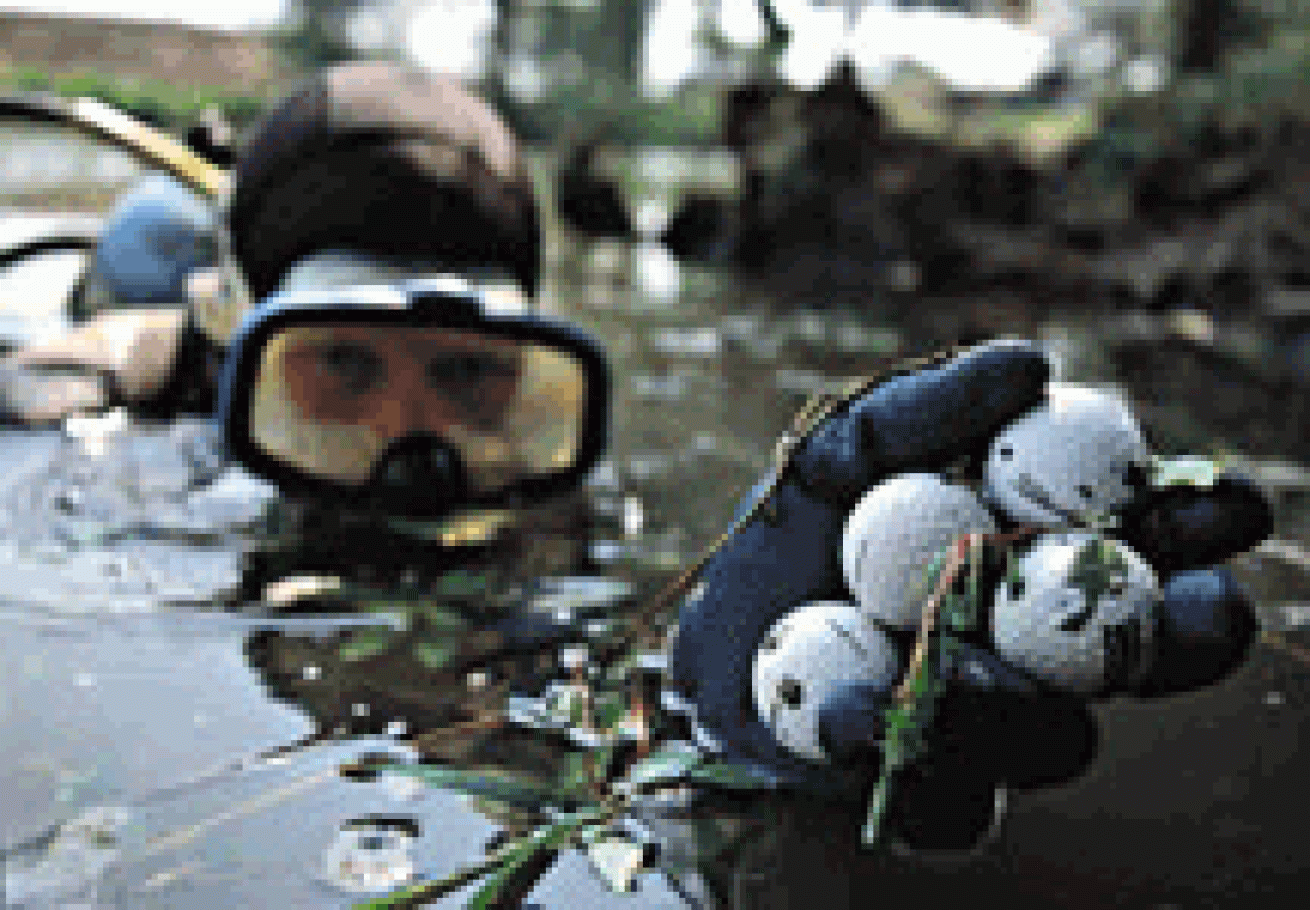
| |On an average workday, Brett Parker collects 3000 golf balls.|
Alas, everyone cannot get into it. Veteran golf ball divers like to tell the tale of the sport diver who, accustomed to the clear, warm waters of the Caribbean or Great Barrier Reef, thinks he can rake it in as a golf ball diver. "Most people say, 'I've been here and I've dived there' and I say, 'Those are real pretty places,'" says Paul Lovelace, a diver and owner of Golf Ball Paul's in Kansas City, Kan. "They last 15 minutes."
"It takes a special breed of cat to do this kind of work," says Fred Willis, owner of Golf Plus, a golf ball recycler, in Dallas. A special cat, indeed. The water is so filled with muck and chemicals (fertilizer and pesticide run-off) that divers must have regular tetanus shots, and all are quick to hop in the shower after they've finished working. And except in Arizona and Palm Beach, where the plastic-lined, man-made water hazards are considered the cushiest in the business, most golf ball diving is in zero-visibility blackwater. "You can put your fingers on your mask and not see your fingers," says Norm Spahn. And if you can't see your fingers, you certainly can't see your pressure gauge, not to mention the snapping turtles and snakes and gators lying on the bottom of the pond.
Spahn should know. He's suffered three venomous water moccasin bites, and now carries a snakebite kit with him, as does Parker, who's also been bitten three times. If Spahn needs any more reminders of the inherent dangers, he can glance at his left arm, which still bears the scars of an alligator bite he suffered four years ago at the Sawgrass Country Club. So much for the myth that alligators don't attack under water. "Think about it," says Spahn. "They eat fish."
Of course, on any given day, a golf ball diver is likely to encounter an equally dangerous threat, which is why Parker wears heavy work gloves. Many ponds are littered with broken bottles, which can cut a diver's hands to shreds and leave him out of work for months. And if it's not broken bottles, it's other man-made pollution.
In 1993, Parker nearly drowned when he became ensnared in a "cobweb of lures and fishing lines" that was attached to a submerged tree. Now, he always carries a hunting knife, which is securely attached to his left calf. Norm Spahn almost met the same fate while diving in Texas a few years back. He had just run out of air in his tank when he became entangled in a roll of barbed wire. Trying not to panic, he held his breath as he carefully worked himself out. "You have to be a very self-sufficient diver to do this," says Spahn. "Even if you had a friend, they couldn't see you."
Still, close calls are preferable to the fate that other divers have suffered. On June 11, 2001, Emmett Clive Willis III, a diver who'd been certified for only three months, died while retrieving balls from the pond at the 15th hole of the Westport Country Club in Hickory, N.C. He was 51 years old. On Dec. 31, just six months later, 21-year-old Mark Feher, an experienced diver, perished while retrieving balls from the Links of Boynton Beach, in Florida. In both cases, the cause of death was drowning.
Golf ball divers treat death with the sort of casual interest that rock climbers do. Everyone knows of someone, or has heard of someone, who has died. If you really want to get a diver's blood boiling, death will not do it. Nighthawks, however, will.
"You have no idea how much damage they do to me," says Parker.
"I figured out one time that they were costing me $30,000 a year," says Spahn.
"A bunch of thieving bastards," says Gerstner.
Crime and Punishment
|| |---|
|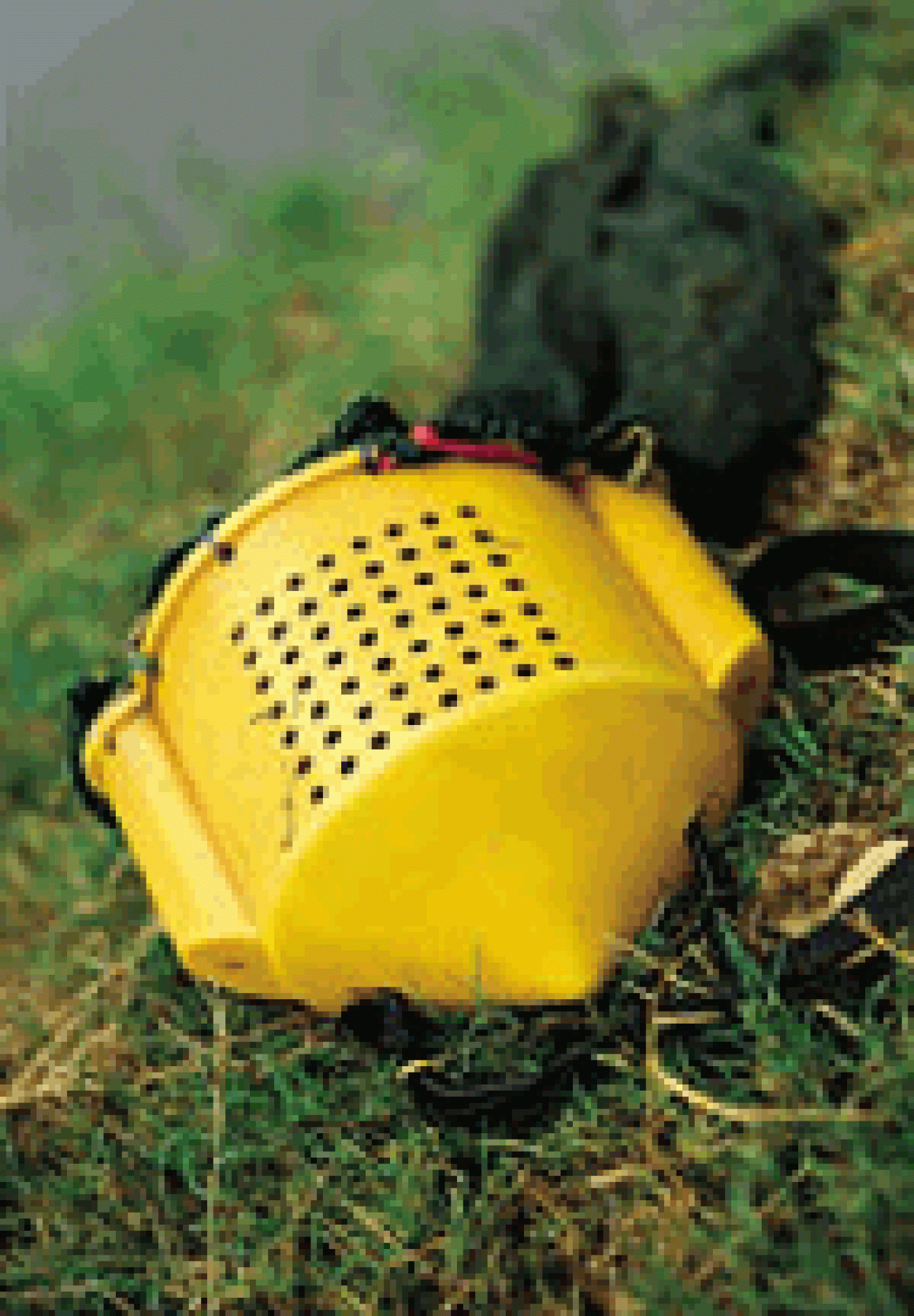
| |The top of a bait bucket forms a one-way valve for Parker's collection bag.|
The ill will is not misplaced. Sure, there are the retirees who walk the golf course at night, skimming balls as they go (a retiree in Atlanta once tried to sell Spahn 42,000 balls), but it's guys like "Mark" and "Matt," two former poachers who agreed to speak for this article on condition of anonymity, who inspire the greatest venom.
Mark, 27, and Matt, 31, poachers who worked in the Southwest before recently going legit, aren't the kind of boys you'd bring home to Mom. Mark's on parole for assault; Matt for safecracking, a crime for which he spent six years in prison. Still, they showed a kind of work ethic that would make a mother proud. Seven nights a week, they'd meet three or four other guys at dusk and sneak onto a course. "Once the sun went down, all the balls belonged to us," says Mark.
Working as late as dawn, they'd get 5,000 to 6,000 balls a night, sometimes working the same golf course as often as once a week. When they first started, they'd get paid 20 to 25 cents a ball. Selling the balls was no problem; Matt had four uncles in the business.
Unlike many poachers, they knew how to dive. But many of their colleagues still favored wading the edges, where most of the balls land. Matt, for example, once came upon two of the guys in his crew ("both really big") "beating the shit out of each other" over who got to work the edge. On another occasion, he found his crew beating the living daylights out of another poaching crew, rivals who'd beaten them to a pond. "But I broke it up," says Matt, " 'cause the other guys were my cousins."
Golf course security is often lax. One night, the guys were working a course, says Matt, "and the security guy is sitting there smoking a joint, talking to us." When the poachers were finished, they offered the guy $20 to give them a ride back to their truck. During the ride, the security officer mentioned that he worked every Tuesday and Thursday. "So we'd only hit that course on Tuesdays and Thursdays," says Matt, "and pay him $40 for a ride each way."
It's not always so easy. They've been chased by the cops. They've been shot at. They've received tickets for trespassing. But, says Mark, "they pretty much give you a slap on the wrist for it." When Mark received his $350 ticket for trespassing, for example, he just threw it in the trash. Why? He'd never shown the cop his driver's license. "I always left my money and wallet at home--in case I had to run."
When poachers do get arrested in the U.S., it's usually for trespassing and not grand theft. Not so in Great Britain, where the arrest of John Collinson, 36, a veteran poacher from Chorley, Lancashire, spurred a media frenzy.
After emerging from a hole at Whetstone Golf Course in Leicester in August 2001 with 1,158 "lakeballs," as the Brits call them, Collinson was arrested for theft and sentenced to six months in jail. He then became a cause célèbre, the subject of every daytime TV show, as Brits protested the severe punishment for what seemed like a minor crime. His case even reached Prime Minister Tony Blair, who wrote a letter on Collinson's behalf to the local member of Parliament. Collinson was freed early, and the case is now in appeal. In the greatest of ironies, however, the arrest may have been the best business card he could have bought. Golf courses are now lining up to give him legit lakeball work.
It's not an unusual career path. "Everybody I know started out at night," says Mark. Still, when American poachers get arrested or harassed by golf course security, they don't present quite the jolly face that Collinson did. American poachers who've been arrested or harassed by security have returned to the scene of the crime and dumped chlorine on the greens, torched them or run motorcycles over them. Mark likes to tell the story of one poacher who, after being arrested for trespassing, returned to the course and cut the putting green in question. Then he rolled it up and threw it in the pond.
The Boom Goes Bust
|| |---|
|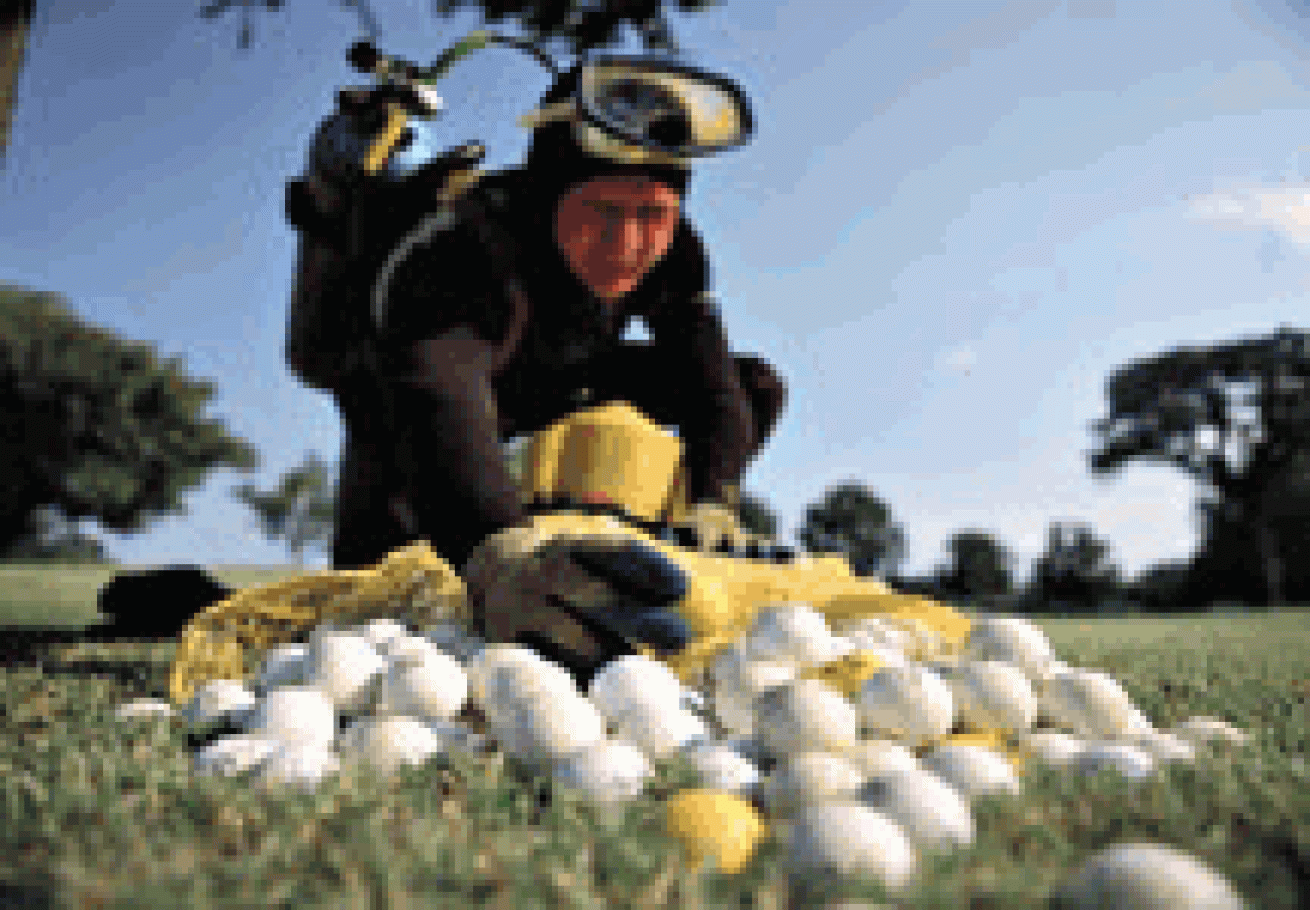
| |Bringing home the bacon: Parker nets about nine cents for ever nugget of "white gold" he recovers.|
Even crime isn't what it used to be, though. For poachers and pros alike, business has been down, and the crazy amounts of money have dried up. Everybody has a theory. Too many people have gotten in the business and driven the prices down. The market's been flooded with new cheap balls. And then there's Parker's favorite: "Every guy who lost $2 or $3 million in the stock market is no longer taking Thursday afternoons off to play golf," he says.
There are other perks, though. In his 14 years of diving, Parker has found the golf balls of Nick Price, Mark Calcavecchia and Fred Couples. Norm Spahn has found a ball of the first President Bush. And Parker's put together a collection of about 400 antique golf balls, worth thousands of dollars, the oldest of which is an 1894 Gutta Percha, retrieved from a course in the Hamptons.
Not all of these things have fallen in by accident. Parker tells the tale of one golfer in Plano, Texas, who, in sheer frustration, dumped his entire golf bag into a river that ran through the course. It was only as he watched it sink to the bottom that the golfer realized that $1,500 and his Rolex were also in the bag. Parker was called in for retrieval. But, he says, "we never did find it."
Parker has found other, more unlikely things in the bottom of ponds. He's found two BMWs, two Cadillacs, and more guns than he can count. Once, in Florida, he found a dead woman in a car.
Mostly, though, he finds golf balls and golf clubs, tangible proof of the maddening nature of the game. He's found so many golf clubs that he's completed four sets of Pings, three of which he sent to his relatives in Africa and one that he sent to his brother in Florida. But he didn't bother keeping a set for himself. Even though Parker was once a nine-handicapper who regularly shot in the high 70s, a good set of clubs would probably just sit in his garage. "The last place I want to go on a weekend," says Parker, "is a golf course."

